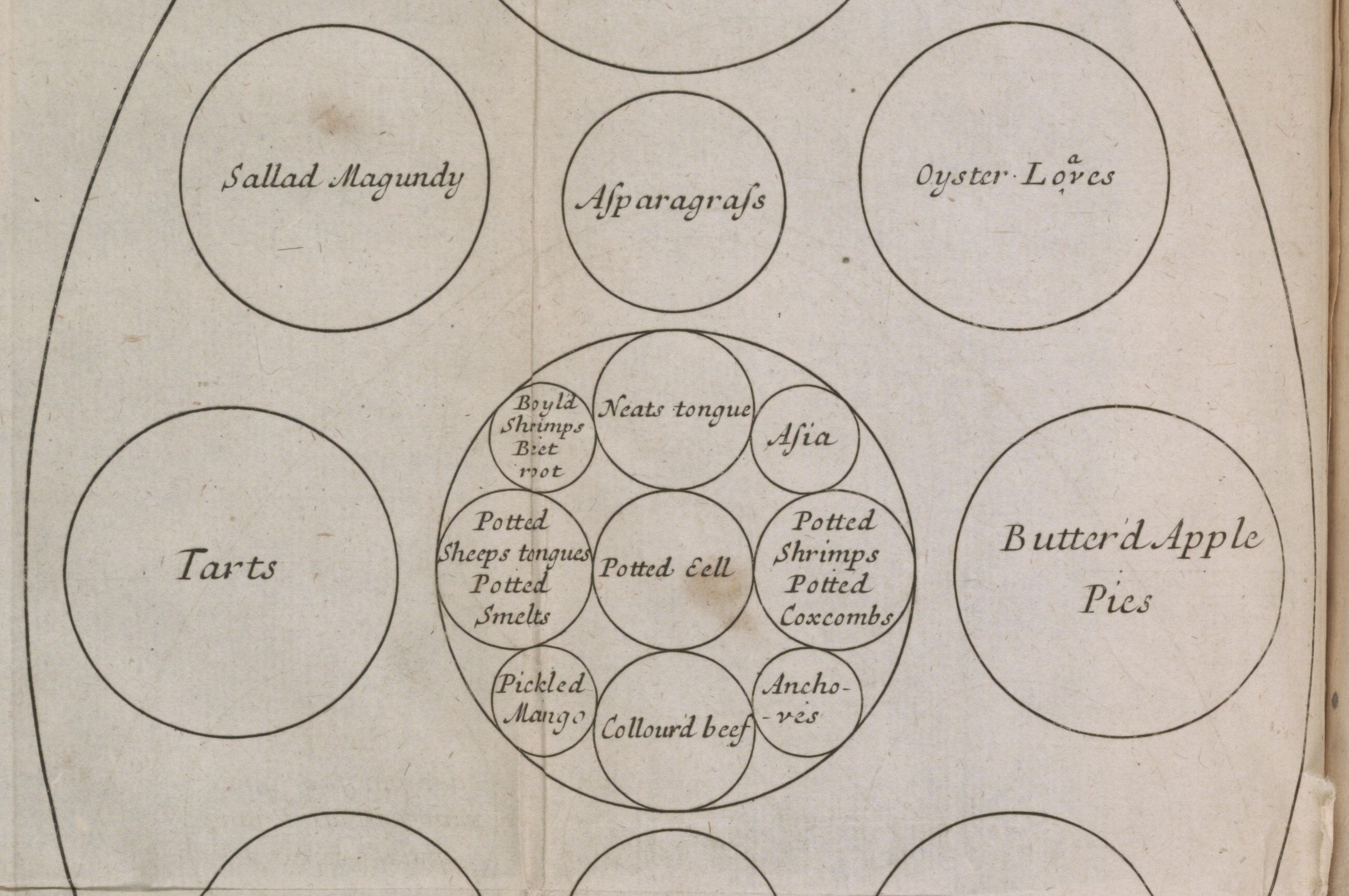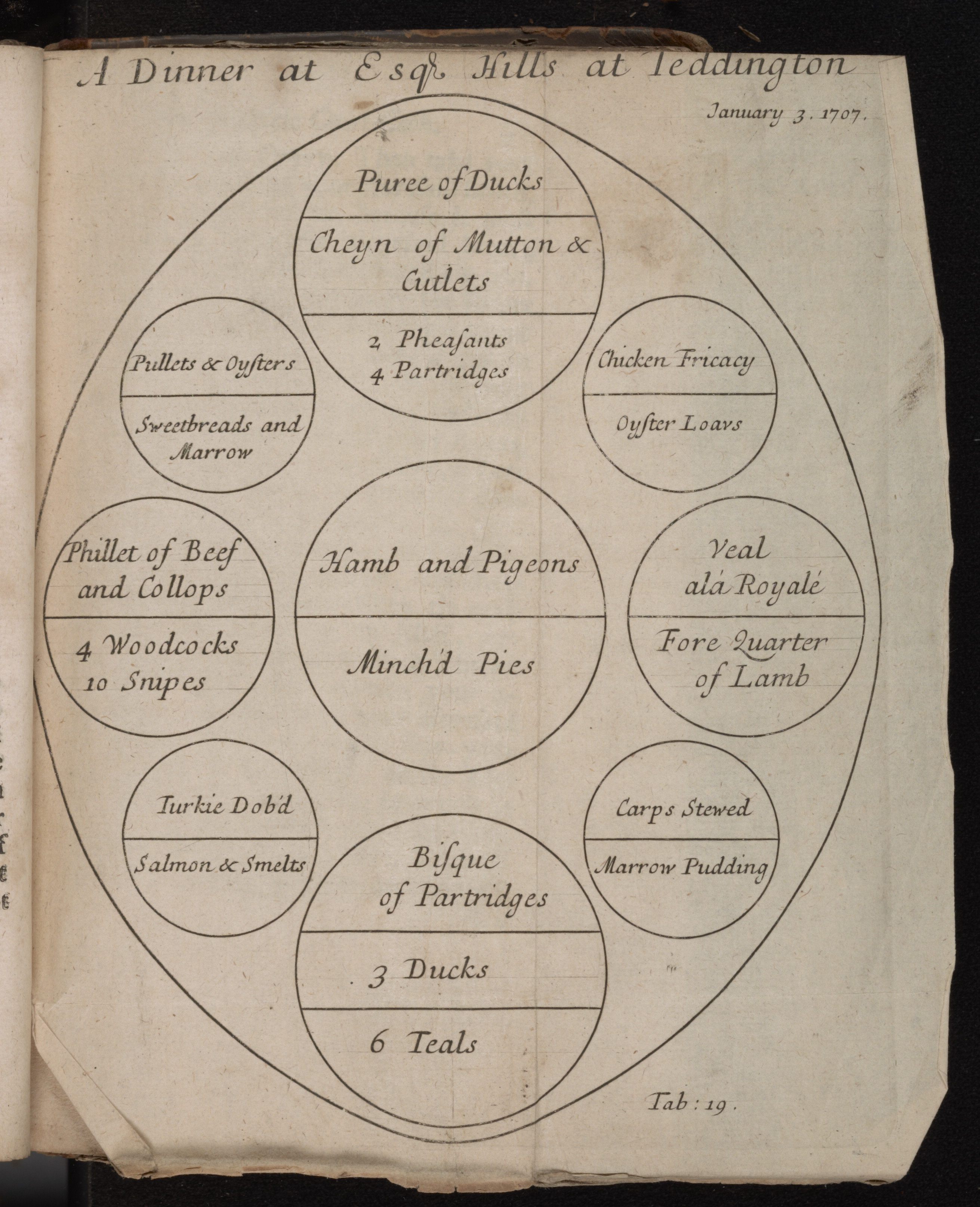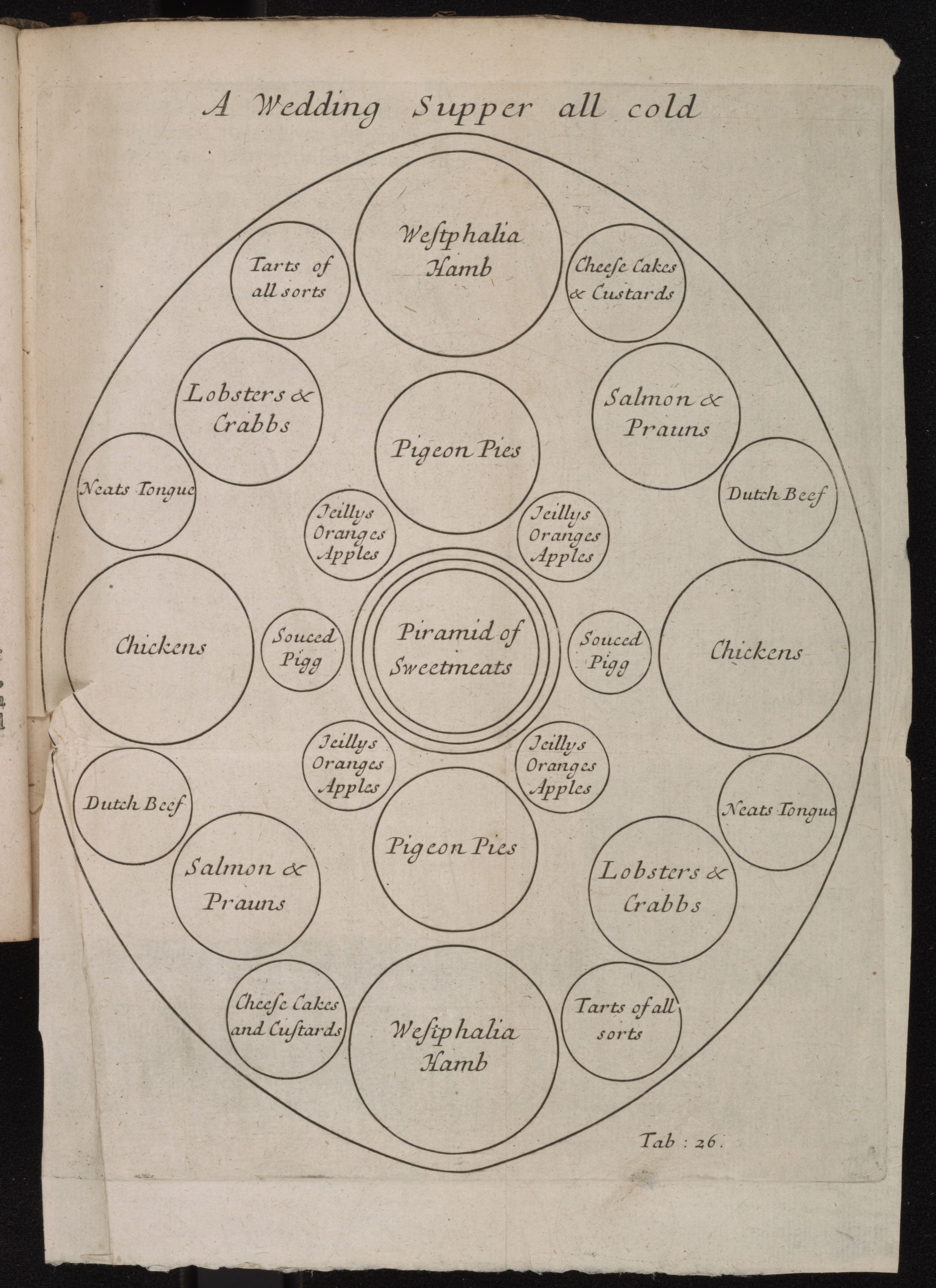The Finicky Food Diagrams of a Royal Chef
When you cook for kings and queens, dinner needs to be perfect.

Patrick Lamb had been dead for a year when his first (and only) cookbook was published in 1710. The first edition of Royal cookery, or, The complete court-cook sold badly. The problem? No one could afford to make his recipes. But Lamb wasn’t an ordinary chef. Lamb published specific diagrams on how to set a table for kings and queens.
Lamb started work in the royal kitchens at age 11, and served as head chef for five English kings and queens in a row: King Charles II, King James II, King William and Queen Mary, and Queen Anne. His posthumously published book had recipes alongside dinner diagrams showing exactly where each dish had to go. For a wedding, a pyramid of sugary sweetmeats is surrounded by platters of pigeon pies. Another meal featured purée of ducks in a proud place at the top of the table.

This finicky food placement was a feature of the time’s French-style dining. Most dishes had to be in reach of each guest, since it was considered inelegant to have servants interact with diners during a meal. Cooks such as Lamb devised diagrams for variety, symmetry, and reachability.

Some of the dishes Lamb suggests for the dinner table seem simple, such as “Turnep-Soupe.” But Lamb recommends putting a whole roasted duck on top of the finished soup. The recipe for Spanish meat stew, olio, is six-pages long and requires the chef to get up at six in the morning. Other fancy recipes have lunch lady-ish names, such as “Rabbet-Surprize.”

Even though his diagrams depicted famous meals and the high life, Royal cookery wasn’t a royal hit. But Lamb’s life as a famous chef in a French-dominated field had been successful, leading some scholars to call him an early celebrity chef. 27 years after he died, he even became a literary hero when a magazine story portrayed Lamb’s fine English cooking as an emblem of superiority over the French.

Most people aren’t cooking rabbit surprise these days, but Lamb’s dinner designs made it into the 21st century. In 2000, one of his elegant table settings was recreated by food historian Ivan Day as part of a British exhibition on historical eats. Unfortunately, the food on display wasn’t edible. Even today, you’d have to shell out the big bucks to make Lamb’s kingly cuisine.
Gastro Obscura covers the world’s most wondrous food and drink.
Sign up for our regular newsletter.

























Follow us on Twitter to get the latest on the world's hidden wonders.
Like us on Facebook to get the latest on the world's hidden wonders.
Follow us on Twitter Like us on Facebook